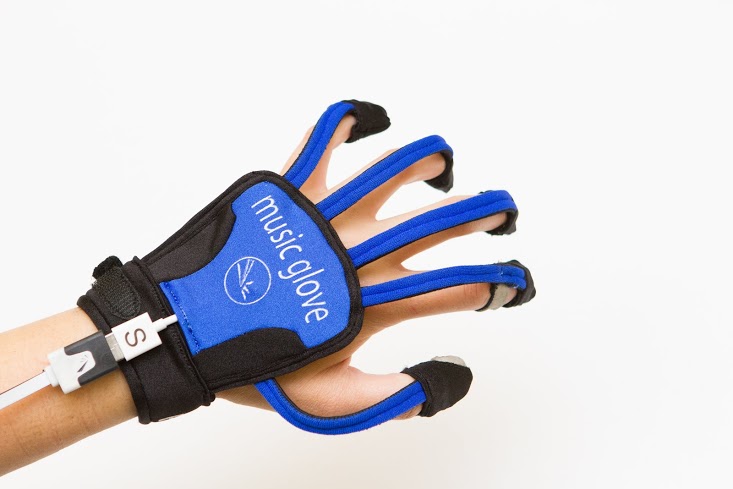

We may earn revenue from the products available on this page and participate in affiliate programs. Learn more ›
Of the 700,000 people who suffer from strokes every year in the United States, only 10 percent fully recover. The rehabilitation process can be long and challenging, especially for older victims in more fragile states of health. Researchers have developed exercises to strengthen patients’ hand and arm muscles to improve their dexterity, but patients often get bored with the repetitive exercises and stop doing them after a while. Video games, however, have been shown to have more success, because they keep patients coming back for more practice. The MusicGlove is the first FDA-approved rehabilitation device that uses video games to help patients regain the use of their hands.
Though other researchers have created similar gloves to help stroke patients, MusicGlove is one of the few that is available for use at home. Patients wearing the glove do a series of handgrips, shifting their hand’s position in time with a song visualization reminiscent of Guitar Hero. The glove measures the strength and speed of the movements so that patients can track their improvement over time. Seeing their progress actually helps patients stay motivated, says Nizan Friedman, the CEO of Flint Rehabilitation Devices, which makes MusicGlove.

Results of the first few clinical trials showed that patients using MusicGlove made many more significant improvements than did those doing conventional exercises, which meant that MusicGlove patients were able to do things like turn doorknobs or use the bathroom independently. Anecdotally, the patients who use the MusicGlove mention their physical improvement and greater independence, but they talk most about the fun of the game—even if they are not the most computer-savvy.
MusicGlove has been through a number of clinical trials and went on sale last year after the FDA approved it for patients to use six months after their stroke. Now, Friedman hopes additional trials will show its efficacy for stroke patients recently out of the hospital and for patients recovering from spinal cord injuries.
